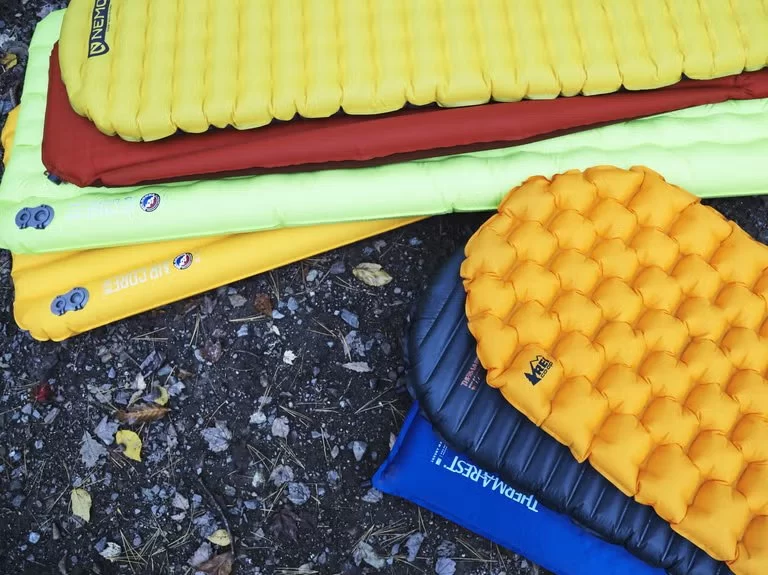- why-sleeping-pads-are-critical-in-three-seasons-camping
- understanding-insulation-and-r-value-for-multi-season-use
- inflatable-vs-self-inflating-vs-foam-whats-best
- size-weight-and-packability-matter-more-than-you-think
- real-user-stories-and-field-tested-advice
- where-to-shop-for-trusted-camping-gear
1. Why Sleeping Pads Are Critical in Three Seasons Camping
When it comes to outdoor overnights during spring, summer, and fall, few pieces of gear impact your comfort like your sleeping pad. It’s not just about softness; a proper sleeping pad acts as an insulation barrier between your body and the ground. During early spring and late fall, ground temperatures can dip drastically—causing even seasoned campers to wake up shivering, despite having a quality sleeping bag. The truth? Your sleeping pad is doing half the work in keeping you warm.
For three seasons camping, choosing the right sleeping pad isn't a luxury—it's essential. Whether you're hiking through the Appalachians in April or setting up at Pine Cliff Resort in October, your pad should shield you from cold ground and offer support that prevents backaches. When you sleep poorly outdoors, your entire next day is affected. A reliable pad ensures rest, recovery, and safety.
2. Understanding Insulation and R-Value for Multi-Season Use
One of the most overlooked yet critical features of a sleeping pad is the R-value—a measurement of insulation. The higher the R-value, the better the pad resists heat loss to the ground. For three seasons camping, experts recommend an R-value between 2.5 and 4.0. This range will support comfortable sleep from chilly spring nights to the tail-end of fall.
Let’s say you’re camping in Shenandoah National Park in April. The daytime may feel pleasant at 65°F, but nighttime lows can drop into the 40s. If your pad has an R-value of 1.8, you'll likely feel the cold creeping in by midnight. Opt for something closer to 3.5 to stay warm and safe.
Some of the best camping pads offer layered insulation—closed-cell foam combined with air channels—to balance comfort and warmth. Others use reflective materials, like Therm-a-Rest’s ThermaCapture, which reflects body heat back up to you. That means fewer chills, better sleep, and more energy for the trail.
3. Inflatable vs. Self-Inflating vs. Foam: What’s Best?
Choosing between inflatable, self-inflating, and foam pads depends on your personal priorities—comfort, weight, durability, or price. Each has pros and cons, particularly when applied to varied conditions in three seasons camping.
Inflatable Pads: Often the most comfortable and lightweight, inflatable pads can offer excellent insulation with compact storage. However, they’re prone to punctures and require inflation effort or a pump sack. Brands like Nemo and Sea to Summit offer ultralight options that pack down to the size of a water bottle.
Self-Inflating Pads: These combine foam and air, expanding on their own when unrolled. They’re warmer than standard inflatables and more puncture-resistant, but usually heavier and bulkier. They’re great for car campers or anyone staying in one site, like at Pine Cliff Resort.
Closed-Cell Foam Pads: Virtually indestructible, cheap, and reliable, foam pads offer peace of mind but lower comfort. They don’t deflate and are ideal as a backup layer or for ultralight hikers who sleep on tough terrain.
4. Size, Weight, and Packability Matter More Than You Think
Whether you’re backpacking or car camping, the size and weight of your sleeping pad can either be a blessing or a burden. For three seasons camping, you don’t need an ultra-thin summer pad or a bulky winter model—but you do need something that balances portability with performance.
Look for regular or mummy-shaped pads if you’re counting ounces. Mummy pads shave weight and bulk by tapering at the feet but still provide coverage where it counts. For comfort-first campers, wide and thick rectangular pads offer more wiggle room—especially useful if you’re a side sleeper or move around a lot at night.
Also consider packability. Will your pad fit into your backpack’s side pocket or strap underneath? How long does it take to inflate or deflate? Some models now include one-way valves for quicker air release, and others come with integrated pump systems to save breath. These user-friendly details can be game-changers on cold mornings.
5. Real User Stories and Field-Tested Advice
James from Montana recalls a chilly trip to Glacier National Park in September where his cheap foam pad left him stiff and frozen by 2 AM. “I was wearing every layer I had and still couldn’t sleep,” he says. After that experience, he upgraded to an insulated inflatable pad with an R-value of 3.2. “The difference was night and day. My body recovered better, and I actually looked forward to crawling into my tent.”
On the other hand, Sierra, a weekend warrior based in Colorado, swears by her minimalist closed-cell pad for spring overnights. “It’s not luxurious,” she admits, “but I never worry about it popping. I toss it under the tent, under a tarp, or even nap directly on it during lunch breaks.” Her advice? "Know your conditions, and match your pad accordingly."
Feedback like this highlights how personal sleeping pad choices are—and why testing your gear beforehand can prevent headaches later. If you’re unsure what suits your style, some campsites like Pine Cliff Resort offer rentals or demos to try before you buy.
6. Where to Shop for Trusted Camping Gear
Shopping for camping gear can be overwhelming. Between outdoor retailers, big box stores, and direct-to-consumer brands, it’s easy to get lost in specs and reviews. For curated gear that’s appropriate for three seasons camping, visiting niche destinations like Pine Cliff Resort’s gear shop gives you expert-backed choices.
Such platforms often highlight bestsellers based on local conditions. For instance, if you’re heading to New England, pads with higher R-values might be emphasized; for the Southwest, you might get recommendations focused on packability and ventilation. Personalized advice from people who know the terrain is always worth more than a generic five-star rating.
The key is to prioritize quality over gimmicks. A good sleeping pad might cost a bit more upfront, but it can last for years of adventure. Look for long warranties, repair kits included, and strong customer support. Sleep isn’t just part of the camping experience—it fuels it.







